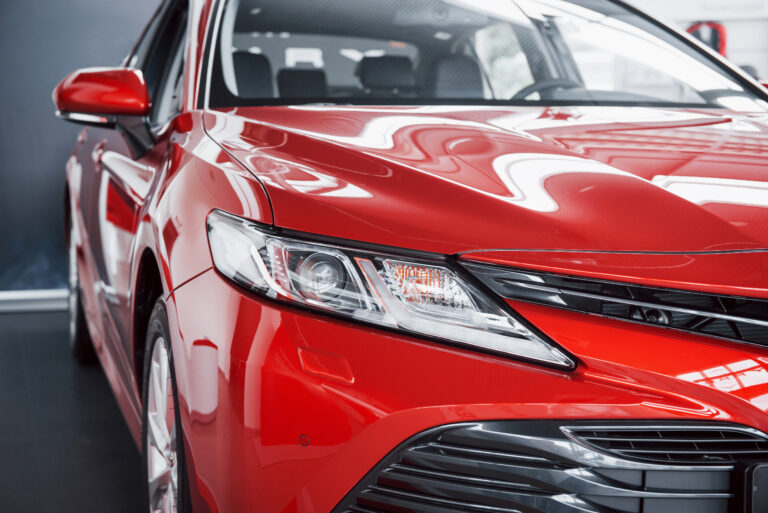
Discover rare insights into McLaren P1 and F1 production numbers, highlighting their rarity, value, and collector importance.
The McLaren P1 GTR was not designed for street driving. It was designed to be a race vehicle, and it was intended to dominate the road. Some have, however, against all odds, been converted to be used on roads, and this has remained a rare example. These McLaren P1 GTR Street Legal models have become some of the most coveted hypercar models on earth. Not only do they go super-speedy, they also are vicious, exclusive, and find themselves on the rare end of the spectrum.
However, how could an exclusively track-focused hypercar, such as the P1 GTR, end up on urban roads? Who is the face of change? How much money does it take to drive legally on the road a piece of racing history? So, what exactly is the McLaren P1 GTR Street Legal? The complete story behind it, unraveled.
What Makes the McLaren P1 GTR Street Legal So Special?
McLaren didn’t have in mind traffic lights or highways when the P1 GTR was born. It was for motorsport and engineering freedom. This car had none of the rules to contend with – no safety features, no emissions regulations, no comfort standards to worry about. It was the deafening, savage, and minute machine machined on the tracks.
It’s for this reason that the notion of P1 GTR as a road-legal car is so intriguing. To be fair, the standard McLaren P1 is a hybrid hypercar that is already pretty much a game changer, but the GTR adds a bit of additional sauce. It has more power, enhanced downforce, and a stripped-out interior to lose some weight. Converting this machine into a road-legal McLaren P variant car was a matter of retaining its aggressive soul and bringing it into a road-legal legal.
It’s the combination of raw power and ultra rarity that makes the P1 GTR the coveted street-legal machine. It is more than a car—it is a mechanical wonder.
The Road-Legal Conversion by Lanzante — How Track Meets Street
The company, which made this dream come true, is Lanzante. Lanzante, a British-based shop, has a deep history with McLaren. They even contributed to the Le Mans victory with the McLaren F1 GTR in the 1990s. Anymore, when a customer wanted to make a P1 GTR drivable, they turned to Lanzante to be sure it was done properly.
The conversion is strident. It involves equipping street lights, emissions equipment, license plate holders, and road tires. However, that is not all. One should change the braking systems for the traffic in the city. Potholes have to be treated with the suspension with which the curbs are provisioned. The requirements of safety regulations increase, such as airbags and stability control systems.
Everything is trap variants that are performed in such a way that does not disrupt the soul of the GTR. The car remains a race car- because it is a race car, under the skin. Lanzante ensures that it is loud, quick, and damned fast even when it is at a red signal and idling.
A Hypercar Unicorn — How Many McLaren P1 GTRs Are Street Legal?
There are 58 McLaren P1 GTRs, but each one of them is designed for track purposes only. Most of these have never been modified by Lanzante to street use (it is believed that less than 30 have been converted), and a fraction of them have been converted to street use. This proves that the McLaren P1 GTR Street Legal is a unicorn, at least in the hypercar industry.
The converted models are registered with a new VIN (Vehicle Identification Number), and that number is not usually the same as the original number that was only used on the track. The conversion process is not only a mechanical process, but it takes a vast amount of paperwork and compliance testing in various countries.
This is very limited, which adds to the value and interest of the car as a collector. One of the P1 GTRs is road legal, and its emergence into the markets gains headlines. And it is not a selling car anymore, it is a legendary four-wheel vehicle.
Performance Breakdown — Track Power, Road Manners
The McLaren P1 GTR is an original version of the car model fitted with a hybrid V8 engine with an approximate power of 986 horsepower. The transfer of power is achieved via a dual method to get the 7-speed gear along with an immediate response. It has been designed to go hard and fast, and stick to corners like glue.
The performance remains heart-stopping even with road-legal preparations. The street model still accelerates in less than 2.9 seconds to reach 0 to 60 mph. It reaches speeds that are above 210 mph. That is faster than most cars can even fantasize about doing, even on a track.
It has excellent handling that is responsive but slightly cushioned when moving on the city streets. In real life, it remains rather noisy and crude, yet it can be handled. When you are behind the wheel, you will agree with drivers that it is like you are in a race car that maybe sneaked through traffic laws.
Interior & Exterior — What Changes and What Remains
Inside, the McLaren P1 GTR Street Legal model is Spartan. Racing seats and carbon fibre trim are to be found in and around the cockpit. It’s not a luxury item—it’s designed to focus you on speed. Just a few inboard technical things as air conditioning and safety instruments, are installed; the rest is all race genotype.
Other than that, the actual majority of GTR’s attention-grabbing aero bits remain unchanged, outside. The enormous rear wing, sideways-giving front splitter, and similar rear diffuser are tweaked very little for the legal scene. Mirrors, headlamps, and side lights are offensive. And yet, it is still instantly recognizable – and scary.
This vehicle doesn’t just get noticed, but gets stopped.
Price Tag of Exclusivity — What Does a Street-Legal P1 GTR Cost?
You already know that the general McLaren P1 is costly, and the GTR version pumps it up. The price of the original P1 GTR was around 2 million dollars. To top it all off, once a Lanzante conversion is included, its price exceeds 3 million.
New listings have been reaching as high as 3.3 million and more for road-legal P1 GTRs. That is not only a price, it is a statement. It is a sign of the rarity of the car, performance, and how difficult it was to make it legal.
Such automobiles are usually sold to high-end dealers in Dubai, the UK, or at a privately auctioned price. Very few collectors around the world possess one, and they are perfectly aware of what they own: a piece of racing history that cannot be greatly overestimated.
Where Can You Buy a McLaren P1 GTR Street Legal Today?
McLaren P1 GTRs without the horsepower and street-legal nature to be allowed to compete in races do not appear in your nearest dealership store. They are a hard item to find and are usually sold by luxury car dealers such as the F1rst Motors in Dubai or even the special shops in Europe. They occasionally attend the high-end auctions, and just as soon as they are announced, they are sold.
Should you be keen on purchasing any, then you must have people in the exotic car market. The deals tend to be confidential and require deep pockets and greater patience. This should always be a certified conversion, and all the documents should be there of Lanzante and any other authorities involved.
The Legal Puzzle — Can You Drive It Anywhere?
It is street legal, but still, there are restrictions. In some countries or states, the conversion may not be recognized, and the rules on emissions worldwide differ. The insurance also poses a challenge not all providers are willing to take the risk of insuring a million-dollar race car.
The owners are sometimes restricted to the number of miles they drive, or they have to make the car a show and display car. Even the most optimized hypercar may cause people to raise their brows in cities where there are strict emissions laws.
Nevertheless, such cars also have some driving experience on the roads of countries like the UK or the UAE. And they attract more attention when they do than most appearances of celebrities.
Competitors in the Street-Legal Track Car Space
The McLaren P1 GTR Street Legal is virtually in a league of its own, though it has a couple of hypercars that can touch it. Speciality firms have also converted some Ferrari FXX-K Evos, but less successfully. One or two of the legal conversions of Aston Martin Vulcan have been made.
Two other competitors have been cars that are street-legal versions of the Porsche 935 and the Pagani Zonda R. Still, there is no such equilibrium of performance, design, and road accessibility as is found in the road-legal McLaren P1.
It is the right kind of combination of authority and sanction.
Behind the Wheel — What Driving a Street-Legal P1 GTR Feels Like
It is a ferocious experience to drive a McLaren P1 GTR Street Legal. It does not drive like a normal car; one feels like they are jet-flying on the ground. The accelerator is crisp, the response of the engine is violent, and the feedback in the steering wheel is instant.
It may be a challenge of visibility, and a secondary consideration would be comfort. However, there is no adrenaline like it. Every line of vibration, every change of gear, every blow of the engine, you feel. It is taxing but highly satisfying.
Not many cars are this exciting, and not many cars with this power are allowed on the streets.
Media, Social Buzz & Collector Opinions
Such McLaren P1 GTRs also tend to go viral on social media sites, particularly Instagram and TikTok. They have their distinctive appearance and thunderous image, which suits high-redline reels. The world community of car vloggers has shared their experience on the road.
These cars are the epitome of automotive art, according to the collectors. The P1 GTR street builds are regularly featured in the online forums and exotic car groups labeled as dream purchases. Any sighting of them in the street is news, any sale is news.
Even in 2025, they are untouchable.
Future Value & Investment Potential
McLaren P1 GTR Street Legal is not just a car; it is a future classic. Their population is very small, which even in converted numbers is minimal, yet they are ever-increasing in value. Their safety as an investment is viewed by many as being better than crypto or art.
They are not only held because of the pleasure that owners get, but also as a long-term asset. Over the years, and with emissions regulations becoming stricter, these automobiles will only become harder to repair or remodel. They will probably become even more desirable each and every year.
It is the possession of one today and the legend tomorrow.
Final Verdict — Is Owning a McLaren P1 GTR Street Legal Worth It?
The road-legal version of the McLaren P1 GTR is not meant to chase everyone. It is costly, radical, and not very practical. But to those who value what it is, then it is indeed the grand prize.
When you buy a car, you are not merely buying a car; you are buying a piece of history, a piece of lore, and something that most people will never have. Need something rare, aggressive, and memorable? Then you may look to get the P1 GTR street version, which may be the fine machine.
To the collectors, it is a crown jewel. To fans, it is a dream come true.
Frequently Asked Questions
Is the McLaren P1 GTR street legal in the United States?
Yes, but only through specialized conversions like those offered by Lanzante. Even then, legality may be restricted to certain states.
How much does it cost to convert a McLaren P1 GTR for road use?
The conversion by Lanzante typically costs several hundred thousand dollars, bringing the total car value to $3 million or more.
Who performs the street-legal conversions for the McLaren P1 GTR?
Lanzante, a UK-based firm known for McLaren projects, is the most recognized name for converting the P1 GTR for road use.
How many McLaren P1 GTR street-legal units exist?
Estimates suggest fewer than 30 McLaren P1 GTRs have been converted into street-legal versions globally.
Can the McLaren P1 GTR Street Legal be driven daily?
It’s possible, but not practical. The car remains loud, stiff, and demanding—designed for speed, not traffic jams.



